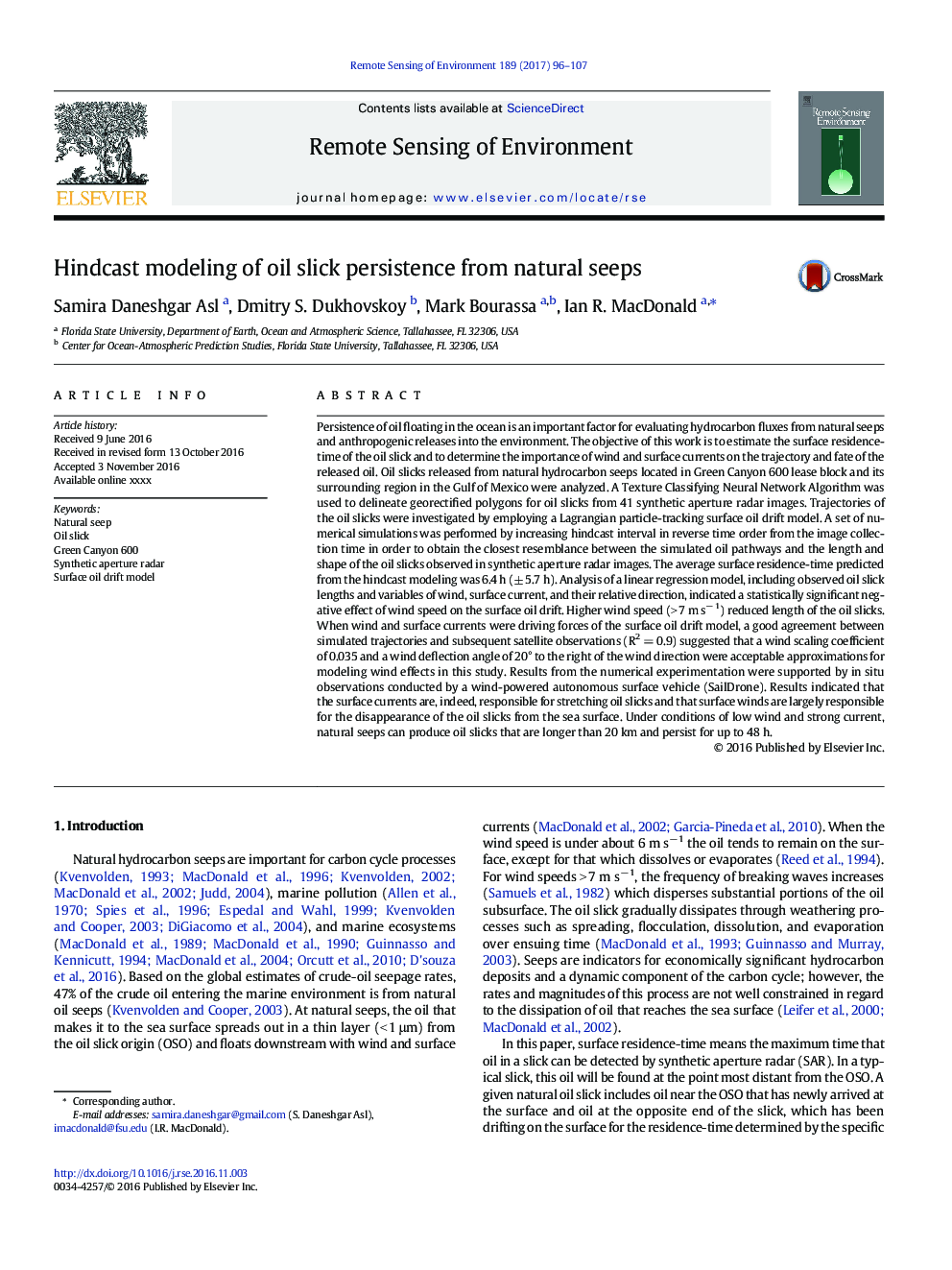| کد مقاله | کد نشریه | سال انتشار | مقاله انگلیسی | نسخه تمام متن |
|---|---|---|---|---|
| 5754897 | 1621211 | 2017 | 12 صفحه PDF | دانلود رایگان |
عنوان انگلیسی مقاله ISI
Hindcast modeling of oil slick persistence from natural seeps
ترجمه فارسی عنوان
مدل سازی قیمت پایداری روغن های نرم از روغن طبیعی
دانلود مقاله + سفارش ترجمه
دانلود مقاله ISI انگلیسی
رایگان برای ایرانیان
کلمات کلیدی
پیوند طبیعی، لکه نفت، سبز کانیون 600، رادار دیافراگم مصنوعی، مدل رانش سطحی روغن،
موضوعات مرتبط
مهندسی و علوم پایه
علوم زمین و سیارات
کامپیوتر در علوم زمین
چکیده انگلیسی
Persistence of oil floating in the ocean is an important factor for evaluating hydrocarbon fluxes from natural seeps and anthropogenic releases into the environment. The objective of this work is to estimate the surface residence-time of the oil slick and to determine the importance of wind and surface currents on the trajectory and fate of the released oil. Oil slicks released from natural hydrocarbon seeps located in Green Canyon 600 lease block and its surrounding region in the Gulf of Mexico were analyzed. A Texture Classifying Neural Network Algorithm was used to delineate georectified polygons for oil slicks from 41 synthetic aperture radar images. Trajectories of the oil slicks were investigated by employing a Lagrangian particle-tracking surface oil drift model. A set of numerical simulations was performed by increasing hindcast interval in reverse time order from the image collection time in order to obtain the closest resemblance between the simulated oil pathways and the length and shape of the oil slicks observed in synthetic aperture radar images. The average surface residence-time predicted from the hindcast modeling was 6.4 h (± 5.7 h). Analysis of a linear regression model, including observed oil slick lengths and variables of wind, surface current, and their relative direction, indicated a statistically significant negative effect of wind speed on the surface oil drift. Higher wind speed (> 7 m sâ 1) reduced length of the oil slicks. When wind and surface currents were driving forces of the surface oil drift model, a good agreement between simulated trajectories and subsequent satellite observations (R2 = 0.9) suggested that a wind scaling coefficient of 0.035 and a wind deflection angle of 20° to the right of the wind direction were acceptable approximations for modeling wind effects in this study. Results from the numerical experimentation were supported by in situ observations conducted by a wind-powered autonomous surface vehicle (SailDrone). Results indicated that the surface currents are, indeed, responsible for stretching oil slicks and that surface winds are largely responsible for the disappearance of the oil slicks from the sea surface. Under conditions of low wind and strong current, natural seeps can produce oil slicks that are longer than 20 km and persist for up to 48 h.
ناشر
Database: Elsevier - ScienceDirect (ساینس دایرکت)
Journal: Remote Sensing of Environment - Volume 189, February 2017, Pages 96-107
Journal: Remote Sensing of Environment - Volume 189, February 2017, Pages 96-107
نویسندگان
Samira Daneshgar Asl, Dmitry S. Dukhovskoy, Mark Bourassa, Ian R. MacDonald,
